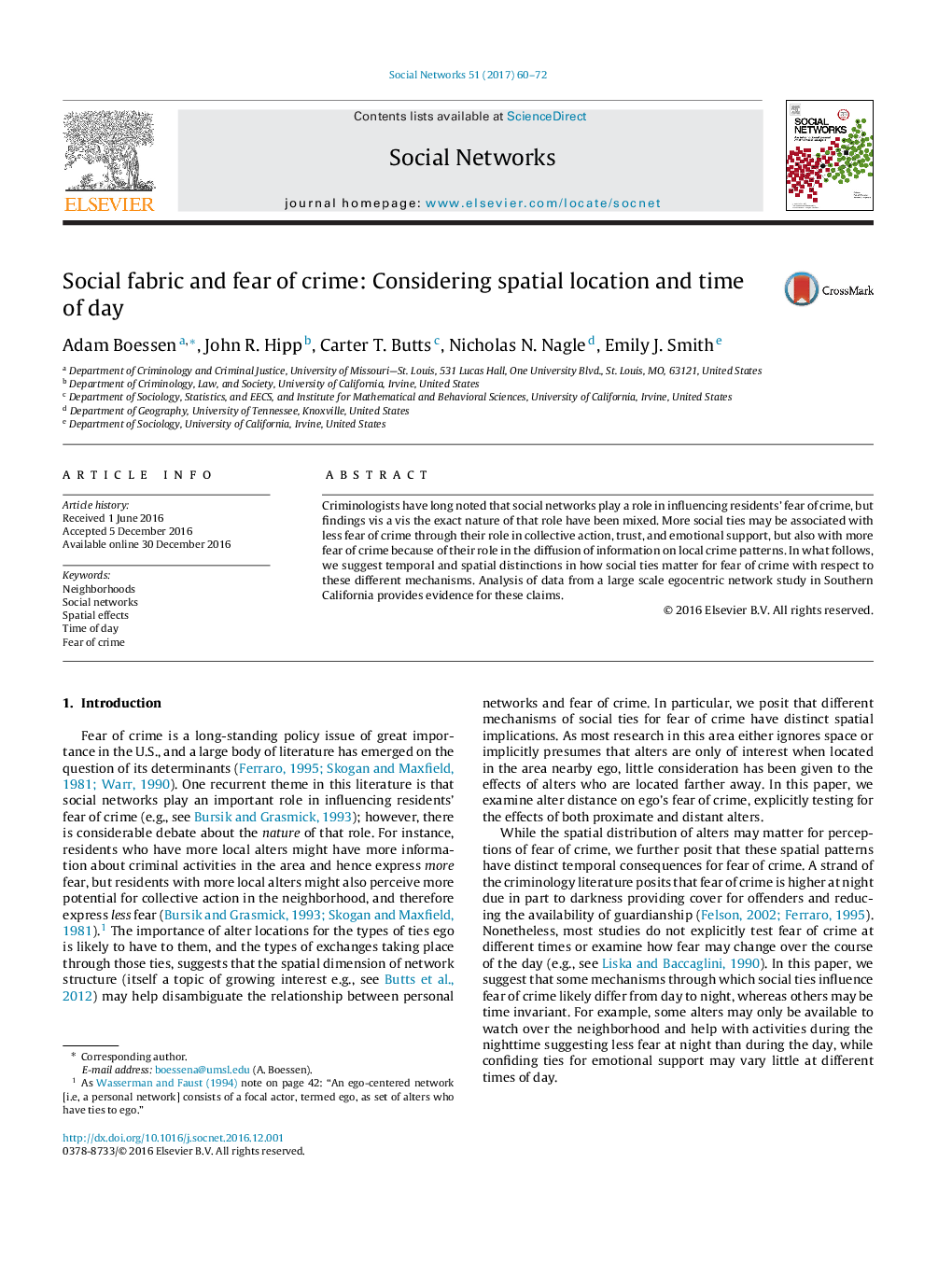| Article ID | Journal | Published Year | Pages | File Type |
|---|---|---|---|---|
| 5126757 | Social Networks | 2017 | 13 Pages |
â¢We consider fear of crime at different times of day and the change in fear of crime from daytime to nighttime.â¢Crime in both ego and alters' neighborhoods have consequences for fear of crime, but crime in alters' neighborhoods only plays a role in the daytime.â¢Personal networks have consequences for fear of crime, but there are spatial and temporal considerations.â¢Safety ties nearby the home reduce fear of crime at all times of day, but other more distant ties alters matter for nighttime fear of crime.
Criminologists have long noted that social networks play a role in influencing residents' fear of crime, but findings vis a vis the exact nature of that role have been mixed. More social ties may be associated with less fear of crime through their role in collective action, trust, and emotional support, but also with more fear of crime because of their role in the diffusion of information on local crime patterns. In what follows, we suggest temporal and spatial distinctions in how social ties matter for fear of crime with respect to these different mechanisms. Analysis of data from a large scale egocentric network study in Southern California provides evidence for these claims.
